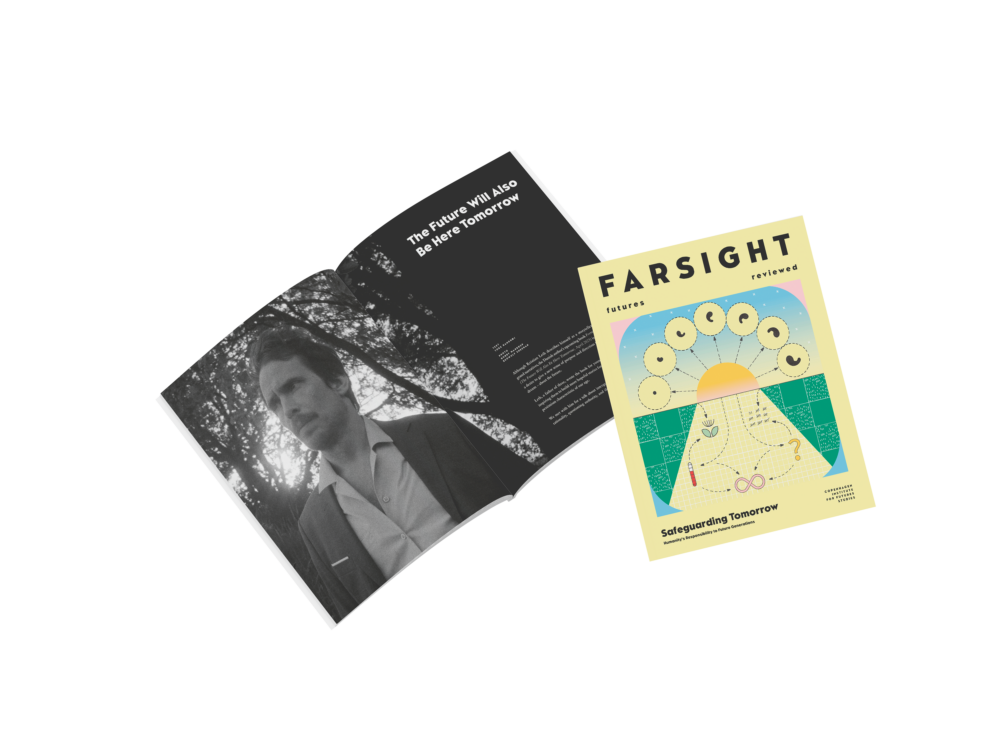
In turn, we use cookies to measure and obtain statistical data about the navigation of the users. You can configure and accept the use of the cookies, and modify your consent options, at any time.

Dispelling the Myth of Overpopulation
Interview with Dr. Alice Hughes about the dangerous idea that threatens the health of the biosphere
In 1968, biologist Paul R. Ehrlich published the seminal book The Population Bomb, which predicted a future of worldwide famine and resource depletion unless measures were taken to cull the rising global population. The book, although controversial and hotly debated, has since played a key role in shaping public policy and attitudes towards demographic and environmental issues. Even today, concerns about the hazards of overpopulation continue to influence discussions about the relationship between population, resources, and the environment.
But this idea is as dangerous as it is counterproductive, argues Dr. Alice Hughes, who is an Associate Professor of conservation biology at the University of Hong Kong. In a recent paper published in the journal Biological Conservation, she and a group of fellow ecologists mount a sharp criticism of the overpopulation narrative which they believe leads to destructive solutions to the biodiversity crisis.
—
Dr. Hughes, You take aim at Paul Ehrlich and others who claim there is a direct link between ecological decline and population growth and that future solutions to the biodiversity crisis will need to include strict measures like population control. What is it that’s so misguided about this idea?
There are several problems with it. One is that it completely ignores the fact that there are very different consumption patterns all over the world. For example, the consumption of someone in Eritrea is the equivalent of about half a hectare of land, while someone in Qatar uses 14.4 hectares on average. So you could literally support 30 Eritreans for one Qatari.
If we continue to propagate this myth that it’s just population growth that’s the issue, we are going to scapegoat populations across the world who contribute relatively little to biodiversity loss and shift responsibility away from nations that enjoy high consumption lifestyles but have exported their footprint elsewhere.

Broaden your horizons with a Futures Membership. Stay updated on key trends and developments through receiving quarterly issues of FARSIGHT, live Futures Seminars with futurists, training, and discounts on our courses.
BECOME A FUTURES MEMBERIt also means that we invest in the wrong kinds of solutions. As people in less developed nations transition to higher consumption lifestyles in the future, we are going to exacerbate biodiversity losses if we continue our current path. What we need to do is find out how we can sustain that transition to higher quality lifestyles without massively increasing the rate of consumption. A myopic focus on population control will not get us there.
Why do you think the idea of population de-growth as an environmental solution – as well as a solution to other issues like food security – is so widespread?
I think it can be explained partly by the fact that there used to be a relationship on a local level between population growth, consumption, and biodiversity decline. But that relationship was very much a pre-industrial phenomenon.
During what’s known as ‘the Great Acceleration’ [a simultaneous surge across socio-economic and Earth System trends beginning in 1950, ed.] we started really seeing the emergence of inequitable global consumption patterns and a decoupling of population, consumption, and biodiversity. Yet the narrative that these things are closely connected persists. Ehrlich’s Population Bomb played a major part in popularising the idea and it is perpetuated today by groups like The Overpopulation Project and others who claim that our primary environmental and ecological issue is that there are too many people in the world.
What are some examples of how inequitable consumption, not overpopulation, is driving environmental degradation and biodiversity loss?
Take something like soybeans. Soybean production is a major cause of deforestation and biodiversity loss in the Amazon, but most of it is used to feed livestock or for biofuels. So, whilst the Amazon rainforest is being deforested to produce soybeans, very little of that is directly consumed by people.
If we look across the African continent, we see that a large part of potential agricultural land is being used for land-intensive commodities like flowers that are exported to developed markets. That beautiful bouquet you are buying from local garage may well have come from Africa, grown on land that could have been used for growing food instead. Not only is this bad for biodiversity, it’s also an industry which has only marginalised benefits for the local population because the flower farms are owned by major corporations.
It’s examples like these that make it clear why a focus on population alone is such a massive oversimplification.
You believe that the overpopulation narrative is not only false, but the solutions proposed to this imagined problem, things like population control, can be destructive to biodiversity as well. How does this work?
It works in several different ways. One example of how declining populations can lead to biodiversity loss can be seen in the widespread rural depopulation happening across the world, which is driven by urban expansion.
In many developing countries, most of the agriculture sector is made up of smallholders. And in many cases, this form of agriculture is much more consistent with maintaining biodiversity because it’s characterised by a heterogenous landscape with patches of native woodland and other native habitats. Industrial agriculture, on the other hand, is characterised by monoculture, fewer fragments of native habitats and the use of more intensive chemical regimes.
So instead of having a mosaic landscape which can maintain biodiversity alongside a relatively low-intensity agriculture, rural depopulation often means fewer areas for biodiversity. It’s another part of the equation that arguments focusing solely on population growth miss completely.
You have some surprising allies in your fight against the overpopulation narrative. Elon Musk recently said that he thinks Ehrlich’s The Population Bomb is ‘the most damaging anti-human thing ever written.’ His motivation for saying that is likely very different from yours, but do you see a general shift in the public perception, or is it very much an uphill battle?
Paul Ehrlich was on 60 Minutes just the other day, so it’s clear there’s still a challenge with public perception and that his ideas still have a lot of influence. I think, unfortunately, that some of the smarter scientists who propagate this myth still don’t realise how damaging it is.
Ultimately, the world is not black and white. We can’t afford not to try to build connections and find allies across sectors because we absolutely need dialogue and discussion – if it’s always about reacting rather than responding you are unlikely to find solutions.
The world is not all going to go vegetarian. But what we can all do is think about more sustainable diets which probably do include less meat because meat requires huge amounts of land. Everyone can do better, but we’ve got to find more nuanced ways to empower people to make changes that enhance sustainability.
The important first step is to engage people. There is no better way of engaging people in the wonders of biodiversity than first-hand experience. We only work to maintain the things that we care about.
You sometimes hear the idea thrown around that there’s no way out of this mess we’ve created because humanity is inherently destructive and unable to reverse course. What’s the best way to counter the doom and gloom and show people that this doesn’t need to be the case?
The best way is to show positive examples of where people manage to live alongside biodiversity. I always like to highlight Costa Rica, which derives a large amount of its income through eco-tourism. This means that the entire population of the country has a stake in maintaining thriving ecosystems at all levels, because their economy depends on it. That’s a good example of what can happen when we take pride in our biodiversity.
You may have heard the term ‘mainstreaming biodiversity’. What that translates into is that we’ve got to stop seeing biodiversity as either an optional extra to do at the end or something that is someone else’s responsibility – the populations of other countries for example. The reality is that if we are to maintain biodiversity globally, our efforts must go across groups and sectors. We all eat, we all drink, we all use more resources than we need to.
Unless we can empower both individuals and organisations and show them that they can have an impact, no one is going to take responsibility. Some of those steps can be small – like forming a closer connection with what we consume as individuals and taking ownership of that.